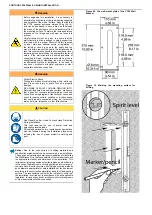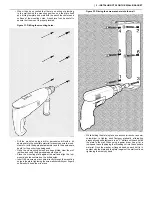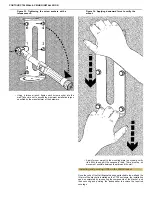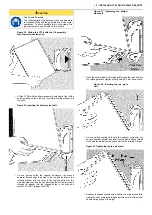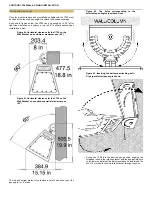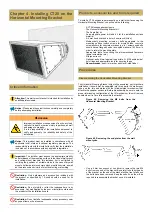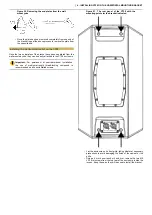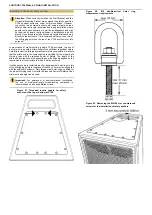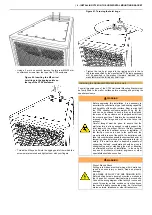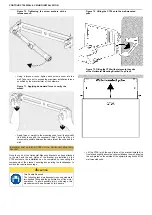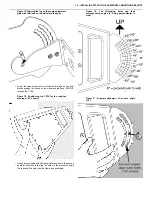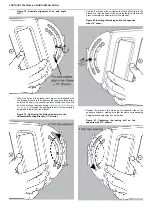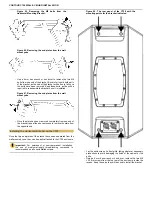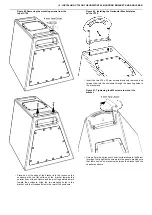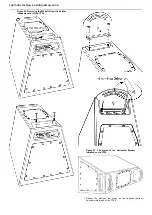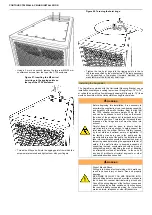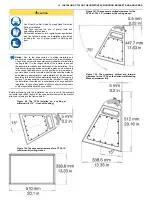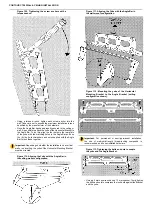
| 4 - INSTALLING CT28 ON THE HORIZONTAL MOUNTING BRACKET
Figure 66. Marking the mounting surface for
drilling.
•
When it has been verified that there is no wiring or plumbing
in the wall behind the mounting position, use the yoke itself
as a drilling template and mark with the pencil the centers and
outlines of the mounting holes. A spirit level can be useful to
assure that the mount is properly leveled.
Figure 67. Drilling the mounting holes.
•
Drill the four holes, using a drill or percussion drill with a bit
appropriate to the substrate material (masonry/concrete, wood,
steel etc.) with the appropriate diameter and to the appropriate
depth for the anchor type being used.
•
Once the four mounting holes have been drilled, clear them of
residue and verify the appropriate depth of each.
•
Place the mounting yoke against the wall in the correct
orientation (with the open "hooks" for the angle-adjustment
plates facing up) and align the four mounting holes centered on
the drilled holes.
Figure 68. Correctly orienting the Bracket yoke.
•
Insert the four screws or anchors directly through the mounting
holes in the rear plate of the yoke, tightening the screw anchors
with your fingers only sufficiently to keep them in place.
Figure 69. Driving the screw anchors into the wall.
•
While holding the yoke in place, use a socket wrench or a power
screwdriver to tighten each fastener gradually, alternating
diagonally opposed fasteners in an "X" pattern until each holds
the plate to the wall. When using a power driver, keep it at a
low speed to avoid stripping the threading cut into the substrate
material. Once the washer or flanged head on each bolt is in
contact with the yoke and the yoke is against the wall, continue
tightening them only by hand.
Summary of Contents for Contour CT28
Page 1: ...Contour CT28 Wall Ceiling Installation...
Page 50: ......


